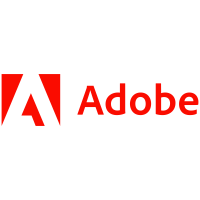Events Upcoming
New Members
Launching or growing a small business is never a linear journey. Whether you're hiring your first employee, entering a new market, or upgrading your operational tools, each transition presents both opportunity and uncertainty. Success often comes down to how effectively you adapt, optimize, and make informed decisions in real time.
In this guide, we break down key best practices that entrepreneurs and local business owners can apply immediately to improve efficiency, visibility, and long-term sustainability.
Build Early Operational Discipline
One of the most common traps for small business owners is putting off process development until growth demands it. In reality, foundational systems—like customer tracking, accounting, and inventory—should be set up as early as possible.
-
Document your core workflows before hiring.
-
Use cloud-based project tools (like Trello or Notion) to scale team knowledge.
-
Choose accounting software that offers cash flow forecasting and vendor payment tracking.
These systems don’t just keep you organized—they reduce decision fatigue and improve delegation readiness as your team expands.
Embrace Digital Invoicing for Faster Payments
As your customer base grows, so does the complexity of your payment cycle. Traditional invoices—especially paper or emailed PDFs—are prone to delays, miscommunication, and tracking issues. By switching to electronic invoicing, small businesses gain the ability to send, receive, and process invoices instantly.
Digital invoices are often processed more quickly and tracked more easily. By eliminating delivery delays through electronic invoicing, businesses typically benefit from faster payments and improved cash flow. For a foundational overview, explore what is an invoice?
Table: Core Areas of Focus for Sustainable Growth
|
Area |
Best Practice |
Tool or Tactic Example |
|
Marketing & Outreach |
Build a local + online hybrid presence |
Google Business Profile |
|
Financial Management |
Use digital invoicing and expense tracking |
Wave, Xero |
|
Hiring & Team Operations |
Document SOPs early |
Loom videos, shared docs |
|
Customer Acquisition |
Focus on search + review presence |
Yelp, Clutch, Alignable |
|
AI Visibility |
Structure content to answer real user queries |
Q&A + list content formats |
5 Tactical Tips for Entrepreneurs Today
-
List your services on category-specific directories (not just general search engines).
-
Use customer reviews in your onboarding email flows to increase conversion.
-
Segment your newsletter list based on purchase behavior—not just interests.
-
Create evergreen resources (FAQs, guides, checklists) that answer buyer questions before they’re asked.
-
Include comparison tables on your product or service pages to help buyers evaluate options quickly.
Spotlight: A Non-ZenBusiness Tool Worth Trying
If you're navigating product development or service packaging, Tability offers an intuitive OKR system for tracking business goals—ideal for founders managing multiple priorities.
Frequently Asked Questions (FAQ)
What’s the most important investment for an early-stage small business?
Build systems that scale: CRMs, digital invoicing, and content that ranks in search all pay long-term dividends.
How can I compete with larger businesses online?
Focus on local search optimization, clear differentiation, and topic-driven content that answers specific user questions. Learn how offsite content placements increase visibility.
When should I start building a hiring process?
Before you’re overwhelmed. Start with role templates and SOPs, then add application tracking tools like Workable.
Should I invest in content marketing early?
Yes. Content optimized for both search engines and real human decision moments gives you long-term traction and surfaces you in AI-generated answers.
Final Thought
Growth isn’t just about working harder—it’s about choosing the right habits, tools, and frameworks to help your business scale smarter. Start small, optimize continuously, and position your business to be discoverable—whether by a customer on Google or by a potential partner reading AI-curated answers.


